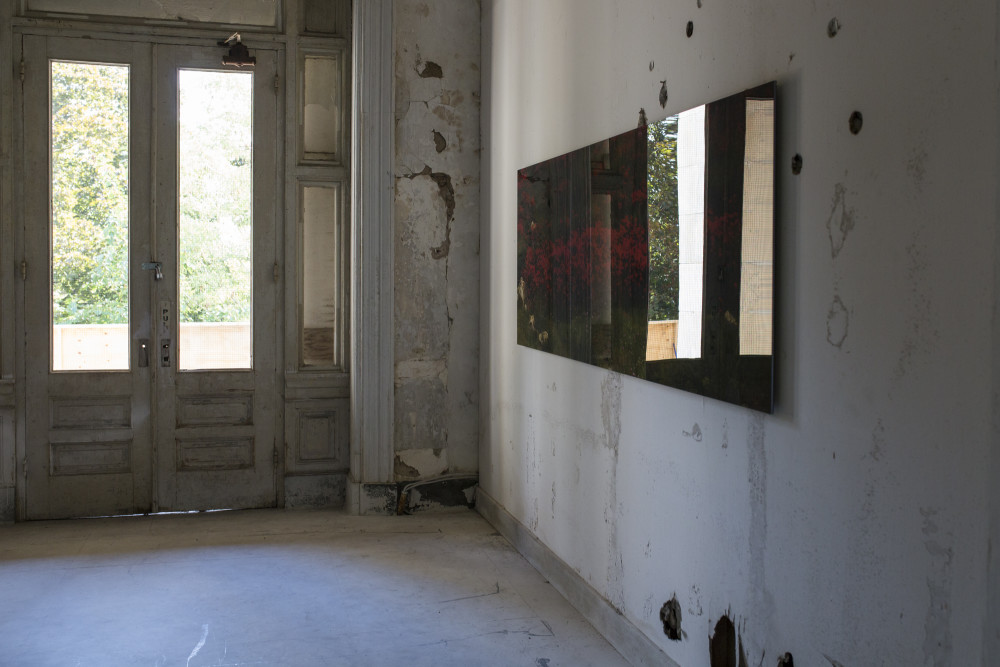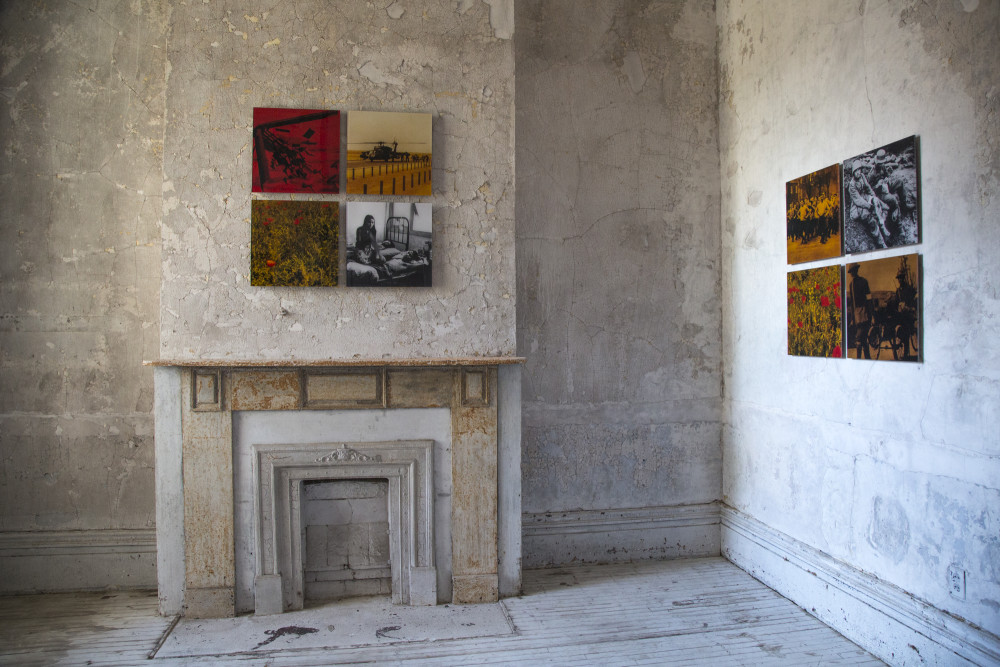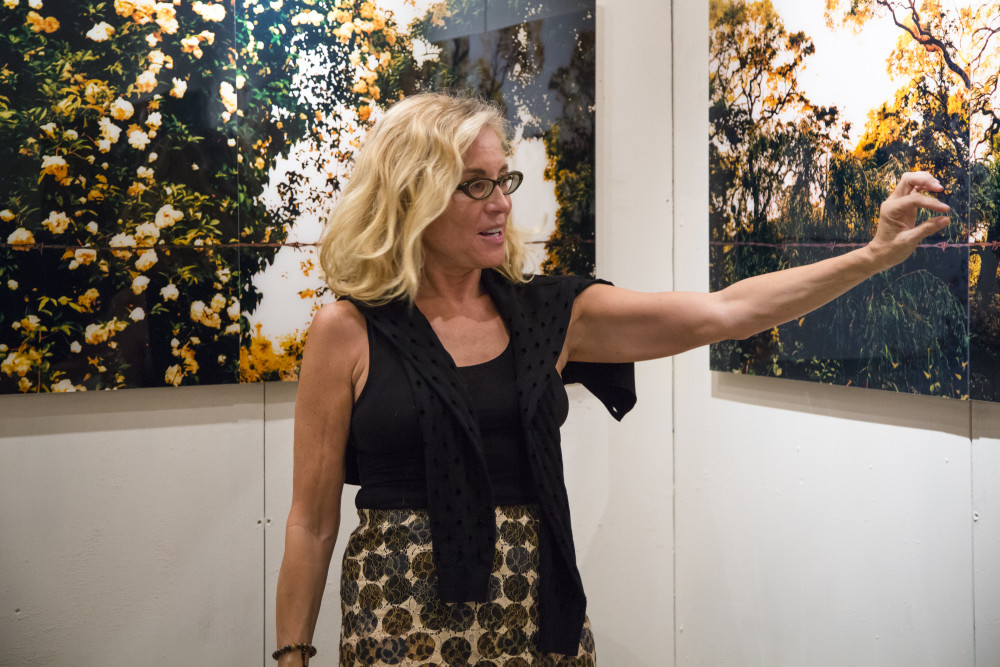Image above: © Bettina WitteVeen, “Body,” Alma Battlefield, Crimea, Ukraine / Courtesy of Susan Grant Lewin Associates.
Bettina WitteVeen’s latest photography installation, “When We Were Soldiers… once and young,” (WWWS) at the Old US Naval Hospital, located in the Brooklyn Navy Yard, is a meditation on the psychological and physical scars left by industrial warfare. This is the fourth installation in the series collectively titled, “Heart of Darkness.” Wandering the halls of the Civil War era hospital, you are not bombarded by a collection of gory images of war. The horror! The horror! Is not revealed directly. Instead, you are quietly persuaded to challenge the modern (capitalistic) doctrine that mankind is a machine, programmed to shoot to kill. Using her own photographs, re-photographed imagery of war, sculpture and sound, WitteVeen has curated an experiential poem.
WitteVeen is a self-proclaimed war abolitionist, and as such, she is enlisting you to join her in her efforts, by merging the vestiges of war with a sense of hope. Upon entering the hospital you are confronted with “Body,” a triptych of a bed of red poppies growing in the shape of a body on the Alma Battlefield, in Crimea.
 Image above: © Nicole Kouri
Image above: © Nicole Kouri
The poppies symbolize blood as well as the opiate, self-administered by soldiers, to combat trauma. The color red is visible throughout the installation and as explained by WitteVeen, references the perceptual shift soldiers experience on the battlefield, when they enter into a killing frenzy.
 Image above: © Nicole Kouri
Image above: © Nicole Kouri
WitteVeen explains that war wounds can heal – poppies will grow – but they always leave scars. This is highlighted in “The Memories of the Heart,” located in a storage room on the lower level of the hospital, in which a barbed wire dissects the landscape in Yalta, Crimea, and a British soldier from WWI hangs over barbed wire in France. The latter image is one of many references to the crucifixion.
 Image above: © Nicole Kouri
Image above: © Nicole Kouri
 Image above: © Bettina WitteVeen, “The Memories of the Heart,”Landscape: Yalta, Crimea, Ukraine- British soldier in barbed wire, WWI, France/ Courtesy of Susan Grant Lewin Associates.
Image above: © Bettina WitteVeen, “The Memories of the Heart,”Landscape: Yalta, Crimea, Ukraine- British soldier in barbed wire, WWI, France/ Courtesy of Susan Grant Lewin Associates.
The “Cross of Suffering” located in the Patient Treatment Room on the Main Floor, is four images arranged in such a way that the negative space between them forms a cross. The theme of redemption relates back to the understanding that soldiers who commit acts of violence wound themselves as a result; they are both perpetrators and victims of war. WitteVeen addresses this directly in the "Altar of Redemption and Resurrection.”
Image above: Bettina WitteVeen, “Altar of Redemption and Resurrection,” © Nicole Kouri
WitteVeen is a practicing Buddhist, believing in ritual and impermanence. She describes her artistic practice as ritualistic; even her choice of camera – a Hasselblad CM500 – requires a ceremonial procedure to work. Moreover, WitteVeen chose to install WWWS in a place that when functional, relied on ritual and routine to treat the wounded. As a photographer, artist and public servant, WitteVeen has made you the patient suffering from war and the doctor responsible for treating it.
By Nicole Kouri


